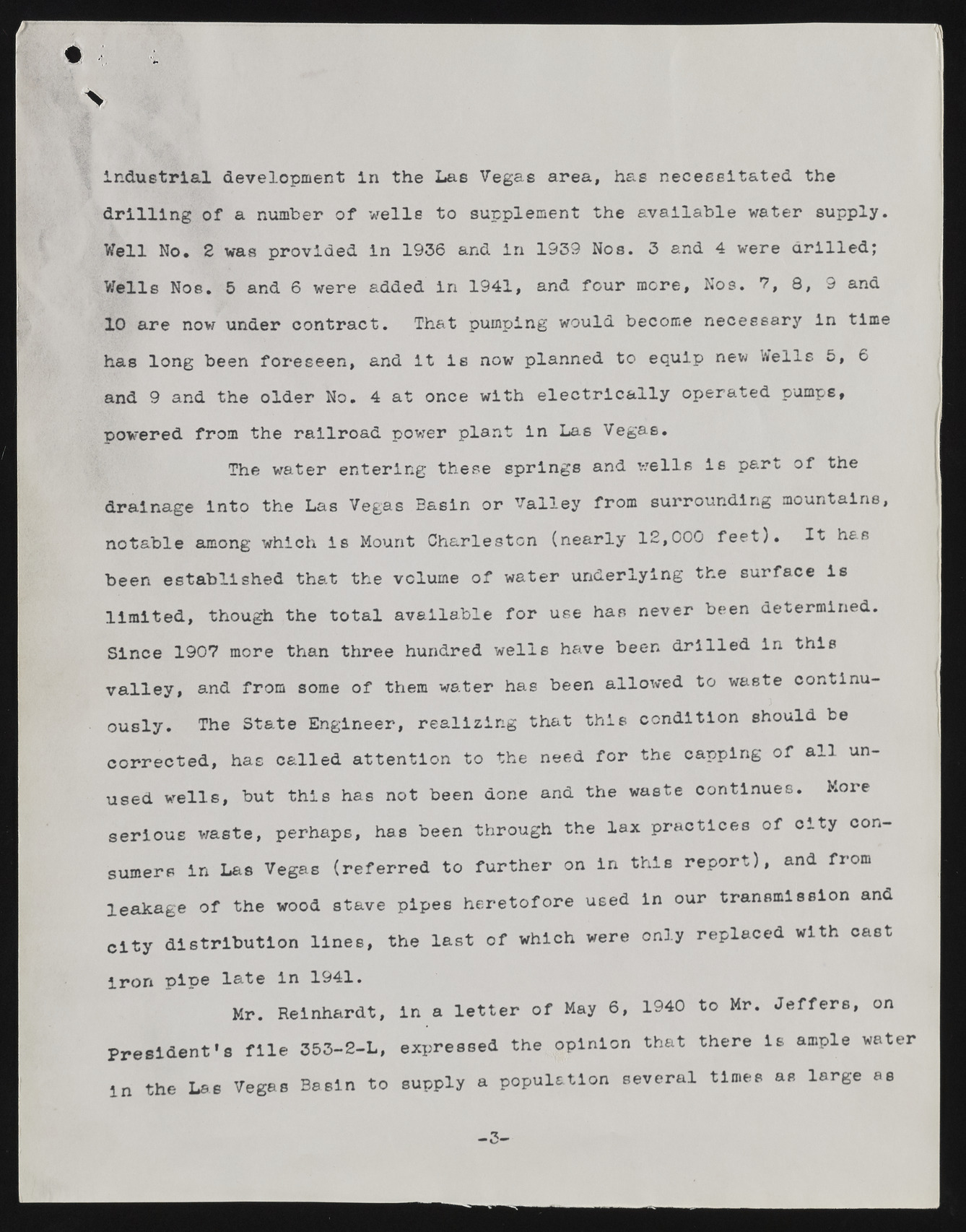Copyright & Fair-use Agreement
UNLV Special Collections provides copies of materials to facilitate private study, scholarship, or research. Material not in the public domain may be used according to fair use of copyrighted materials as defined by copyright law. Please cite us.
Please note that UNLV may not own the copyright to these materials and cannot provide permission to publish or distribute materials when UNLV is not the copyright holder. The user is solely responsible for determining the copyright status of materials and obtaining permission to use material from the copyright holder and for determining whether any permissions relating to any other rights are necessary for the intended use, and for obtaining all required permissions beyond that allowed by fair use.
Read more about our reproduction and use policy.
I agree.Information
Digital ID
Permalink
Details
More Info
Rights
Digital Provenance
Publisher
Transcription
industrial development in the Las Vegas area, has necessitated the drilling of a number of welle to supplement the available water supply. Well No. 2 was provided in 1936 and in 1939 Nos. 3 and 4 were drilled; Wells Nos. 5 and 6 were added in 1941, and four more, Nos. 7, 8 , 9 and 10 are now under contract. That pumping would become necessary in time ha8 long been foreseen, and it is now planned to equip new Vnells 5, 6 and 9 and the older No. 4 at once with electrically operated pumps, powered from the railroad power plant in Las Vegas. The water entering these springs and wells is part of the drainage into the Las Vegas Easin or Valley from surrounding mountains, notable among which is Mount Charleston (nearly 12,000 feet). It has been established that the volume of water underlying the surface is limited, though the total available for use has never been determined. Since 1907 more than three hundred wells have been drilled in this valley, and from some of them water has been allowed to waste continuously. The State Engineer, realizing that this condition should be corrected, has called attention to the need for the capping of all unused wells, but this has not been done and the waste continues. More serious waste, perhaps, has been through the lax practices of oity consumers in Las Vegas (referred to further on in this report), and from leakage of the wood stave pipes heretofore used in our transmission and city distribution lines, the last of which were only replaced with cast Iron pip© late in 1941. Mr. Reinhardt, in a letter of May 6 , 1940 to Mr. Jeffers, on President's file 353-2-L, expressed the opinion that there is ample water in the Las Vegas Basin to supply a population several times as large as -3-

